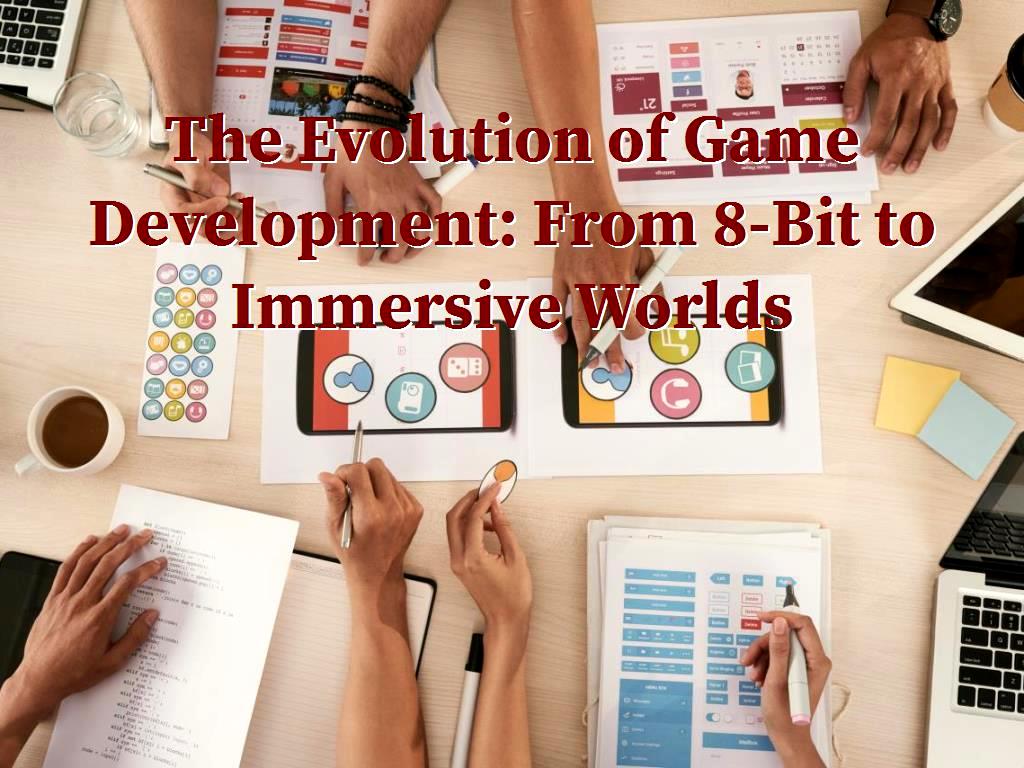The Evolution of Game Development: From 8-Bit to Immersive Worlds
5 minute(s) read | Published on: Apr 04, 2025 Updated on: Apr 04, 2025 |
minimal graphics, and were created with limited technology. However, over the decades, game development has evolved, introducing complex gameplay, breathtaking visuals, and expansive storylines.
This article can explore the timeline of video game development, highlighting the significant milestones. It can focus on:
- The 8-bit and 16-bit eras: How developers worked with limited hardware capabilities and how this influenced creativity.
- The rise of 3D gaming: The transition from 2D to 3D gameplay with the introduction of consoles like the PlayStation and Nintendo 64.
- The modern era: Open-world games, real-time ray tracing, virtual reality (VR), and the role of AI in creating smarter NPCs.
- Indie game development: How smaller studios have pushed the boundaries of creativity with games like Undertale, Celeste, and Hollow Knight.
This article would appeal to both long-time gamers who want to appreciate the history and newcomers eager to learn how we got to where we are today.
The video game industry has undergone a radical transformation since its inception, moving from simplistic 8-bit titles to vast, photorealistic open worlds. The journey from primitive games to cutting-edge digital experiences is not just a story of technological innovation but also one of creativity, trial and error, and cultural impact. This article would take a comprehensive look at how game development has evolved over the years, touching on pivotal moments, technological advancements, and the influence of developers, platforms, and players.
The Beginnings: The 8-Bit and 16-Bit Eras (1980s - Early 1990s)
In the early days, video game development was constrained by the capabilities of home consoles like the Atari 2600 and the Nintendo Entertainment System (NES). The 8-bit era was all about simple pixel-based graphics, catchy soundtracks, and gameplay that often focused on high scores rather than stories. These games were relatively basic but laid the foundation for the future of gaming.
Games such as Pong and Space Invaders relied on straightforward mechanics that were easy to understand but challenging to master. The NES introduced us to iconic franchises such as Super Mario, The Legend of Zelda, and Metroid, which set the stage for more intricate gameplay and storytelling. The rise of 16-bit systems, such as the Sega Genesis and the Super Nintendo Entertainment System (SNES), ushered in colorful graphics, deeper gameplay, and improved soundtracks.

The 3D Revolution: A New Dimension in Gaming (Mid 1990s - Early 2000s)
The mid-90s marked a monumental shift in the industry with the introduction of 3D graphics. This new era began with consoles like the Sony PlayStation, Nintendo 64, and Sega Saturn, which brought more complex and immersive environments to the screen. The transition from 2D to 3D not only affected the graphics but also influenced game design. Developers could now create expansive worlds that felt more real and interactive.
One of the most influential titles of this period was Super Mario 64 (1996), which pioneered 3D platforming. Games like The Legend of Zelda: Ocarina of Time (1998) showed how 3D could enhance both exploration and storytelling. Meanwhile, Final Fantasy VII (1997) demonstrated how the combination of 3D visuals and compelling narratives could captivate gamers worldwide.
This era also saw the rise of early online multiplayer games. Titles like Quake (1996) and StarCraft (1998) allowed players to compete against each other in ways that were previously impossible.
The Modern Era: Open-World Games, Virtual Reality, and AI (2000s - Present)
The 2000s and beyond have seen game development expand in new directions. The rise of open-world games like Grand Theft Auto V, The Witcher 3, and The Elder Scrolls V: Skyrim has reshaped how players interact with virtual worlds. These games offer vast landscapes to explore, where player choice is paramount. With better hardware, developers now have the power to create worlds that feel alive, where NPCs have routines, weather systems change dynamically, and storylines can shift based on player actions.
The power of modern gaming consoles, like the PlayStation 5 and Xbox Series X, has brought us closer to photorealistic graphics. Advanced lighting effects, real-time ray tracing, and 4K resolution are just a few of the technological advancements that make today’s games visually stunning.
Moreover, the rise of Virtual Reality (VR) and Augmented Reality (AR) has given players even more immersive experiences. VR titles such as Half-Life: Alyx and Beat Saber have opened up new frontiers for both gameplay and storytelling. Similarly, AR games like Pokémon GO have integrated the real world with the virtual, creating new, exciting ways for players to interact with games.
Indie Game Development: A Shift Toward Creativity
Over the past decade, independent game developers have become a dominant force in the industry. With platforms like Steam, itch.io, and the rise of crowdfunding through sites like Kickstarter, indie studios can now compete with larger, more established developers. Games like Undertale, Hollow Knight, and Celeste have shown that with passion and creativity, smaller teams can create games that resonate deeply with players, sometimes even more so than their blockbuster counterparts.
In conclusion, the evolution of game development is a testament to the power of technology and creativity working together. From 8-bit blocks to open worlds and VR, the journey has been filled with fascinating milestones that have shaped the medium into what it is today. As technology continues to advance, it will be exciting to imagine what the future holds for game development.
Do you want to own a game? Click here!